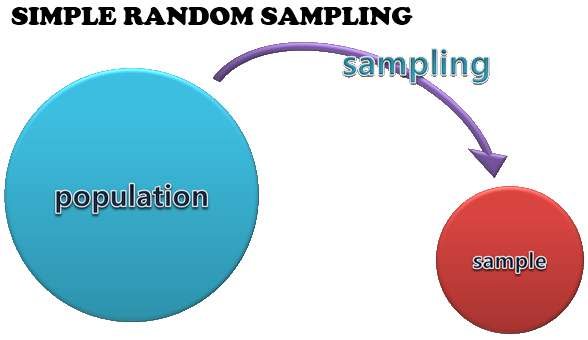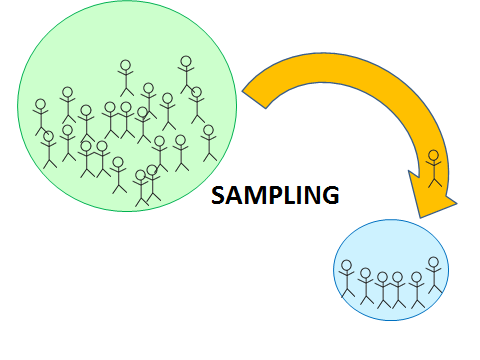The Concept of Sampling #1

Good day everyone and welcome to another episode of the concept of sampling, in sampling we will be looking into the or discussing the introduction of sampling, sampling methods and types.sit back and enjoy.
1. INTRODUCTION
Sample is anything less than a full survey of a population. It is usually thought of as small part of the population, taken to give an idea of the quality of the whole the population is the group of people or items about which information is being collected. It may seem desirable to base decision on complete counts or measurements of people and commodities. Anything less than this may be felt to include only part of the information and to be open to a high degree of error and approximation. In practice, it is only in limited circumstances than 100% survey can be compared. For much general information about people’s opinions and attitude and about the quality of commodities, it is often impossible to carry out complete survey.

Statisticians estimate the population characteristics through sampling. If he has 100% estimate, It then means that the sampled is a complete representative of the population from which the sample was drawn. In addition, a good sample has characteristics of precession by which we ensure that random fluctuation or error variance or sampling error is minimized and absence of systematic variance or sampling bias which is caused by some known or unknown influence that causes the scores to go tend to one side than the other.
The two types of statistics – descriptive and inferential statistics. The inferential statistics. The information statistics deals with two different types of problems, the first deals with making estimates, the second with testing hypothesis. Both tests involve making inferences about population parameters form sample measures. It is impossible to obtain measures of characteristics of a total population. Population characteristics have to be inferred from measures taken form samples. Statistics are taken form samples and using appropriate inferential techniques population parameters are estimated.
2. RATIONALE FOR SAMPLING
Population sometimes can be finite or infinite. Whatever is the type, the process of drawing a sample from a population is always time consuming very costly and indeed difficult samples are drawn from a population due to the following reason.
a. Sampling enables the statistician to draw quick result than does a complete coverage of the population.
b. It helps the statistician to be more thorough, hence better supervision than when it involves the entire population.
c. Studying a sample is naturally cheaper than the whole population
d. Due to the nature and pattern of dispersion or distribution of the population, we find it difficult to study hence the sample is the only way to estimate the features of the population.
e. Within a population there are similarities in the element or subject and a study of the sample of these elements with enough knowledge of what happens in the whole population.
3. SAMPLING METHOD
Regardless of which inferential statistical technique we intend to use, the predictive or inferential power of the test will be governed to a certain extent by the procedure used in selecting the sample. If the sample is not truly representative of the population from which if is drawn; that is, if it is a biased sample, then it becomes virtually impossible to make an accurate prediction about the population.
Bias in sample selection is reduced when methods incorporating at least an element of random selection of subjects are employed. More importantly, the predictions made from such samples have greater validity, because the principles of randomness of selection are fundamental to theories of statistical inferences. These theories are based upon the Laws, of probability and chance. The methods outlined below incorporate, in part at least some random selection of subjects. Sampling methods fall into two categories of the inquiry Probability sampling methods which includes: Random sampling, systematic sampling, stratified sampling, area sampling and non-probability sampling method which also include convenience/accidental sampling, quota sampling, judgment sampling, panel sampling.
Authors have given varieties of these two types of sample. The student should be very a=careful in his use of the various names given to probability and non – probability sample. Some of the various terms used by authors in place of probability and non – probability sample include, random and non – random sample, probability and purposive samples and strategic and non –strategic samples. They mean essentially the same thing.
• Simple Random Sampling
Here, each member of the population under study has an equal chance of being selected the method involves selecting at random from a list of the population (a sampling frame i.e. working universe or non-theoretical population), the required number of subjects for the sample, A theoretical population may include all conceivable element or measures of the population, which in practice the statistician, may not be able to reach. Because of probability chance, the sample should contain subjects with characteristics similar to the population as a whole. That is, some old, some young, some tall, some short, some fit, some unfit, some error e.t.c. One problem associated with this particular sampling method is that a complete list of the population is needed and this is not always readily available. This is sub-divided into
a) Random numbers
b) Sampling with and without replacement
• Systematic Sampling
This method is a modified form of simple random sampling. It involves selecting subjects from a population list in a systematic rather than a random fashion. For example, if from a population of say 2000, a sample 0f 100 is required than every 20th person can be selected. The starting point for the selection is chosen at random.
Thanks for reading.
References
[2]britannica
[5]khanacademy
Image source
[1]image 1
[2]image 2

I've Follow, Upvote. Interesting post. I like, multiply the article and expand it again. Spirit and keep working. Follow me @madimancity
Thanks very much for that, i will make sure of that.
Really great post mate, I wish more people understood this!
Welcome to steem and great to see you're on steemstem too :)
Thanks @tfcoates am really delighted you like this post, more of this kind of post and others are coming up stay tuned..